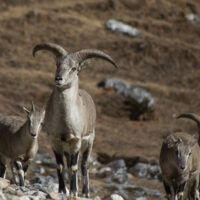
Introducción Taxonomía y Evolución Características Físicas Distribución y Hábitat Comportamiento y Ecología Hábitos Alimenticios Estado de Conservación Relación con los Humanos Testimonios de Clientes Preguntas Frecuentes (FAQs) Introducción La oveja azul, también conocida como bharal (Pseudois nayaur), es una especie extraordinaria que habita los terrenos escarpados de la cordillera del Himalaya. Aunque no es realmente azul ni una oveja, este mamífero caprino representa una fascinante combinación de rasgos de ovejas y cabras. Adaptada a altitudes elevadas y acantilados empinados, la oveja azul desempeña un papel crucial en los ecosistemas montañosos y es una de las presas favoritas del esquivo leopardo de las nieves. Taxonomía y Evolución La oveja azul pertenece […]

Introduction What is the Chadar Trek? History and Significance Trail Details and Highlights Why is the Chadar Trek a Must-Do? Preparing for the Chadar Trek Best Time to Trek Route and Itinerary Cultural Experiences Along the Way Customer Testimonials Environmental Concerns Modern Infrastructure and Challenges FAQ Introduction The Chadar Trek in Ladakh is an exhilarating journey that combines extreme adventure with breathtaking landscapes. Walking on the frozen Zanskar River amidst towering cliffs and pristine snow-covered mountains is a bucket-list experience for trekkers and adventurers worldwide. This trek, considered one of the most challenging and iconic in the world, not only offers awe-inspiring natural beauty but also provides a glimpse into […]

Introducción ¿Qué es el Íbice del Himalaya? Características físicas Distribución y hábitat Dieta y comportamiento Reproducción Amenazas y estado de conservación Importancia cultural Testimonios Preguntas frecuentes Introducción El Íbice del Himalaya, una majestuosa y resistente cabra montés, es un ejemplo asombroso de adaptación y supervivencia en algunos de los terrenos más duros del mundo. Conocido científicamente como Capra sibirica sakeen, es una de las especies más ampliamente distribuidas de su género. En esta guía exploramos todo sobre esta increíble criatura, desde sus características físicas hasta su importancia cultural. ¿Qué es el Íbice del Himalaya? El Íbice del Himalaya, también llamado Íbice Siberiano, es una especie politípica de íbice originaria de […]

The Argali (Ovis ammon), also known as the mountain sheep, is a fascinating creature that inhabits some of the harshest terrains in the world. Found across the highlands of western East Asia, the Himalayas, Tibet, and the Altai Mountains, the Argali is a symbol of resilience and natural beauty. In this blog, we dive into every aspect of the Argali, from its unique physical characteristics to its habitat, behavior, and conservation status. Table of Contents Introduction to Argali Physical Description Habitat and Distribution Behavior and Social Structure Diet and Feeding Patterns Reproduction and Life Cycle Predators and Threats Conservation Efforts Customer Testimonials FAQs Introduction to Argali The Argali is the […]
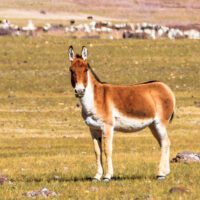
Table of Contents Introduction to the Tibetan Wild Ass Scientific Classification and Local Names Physical Characteristics and Seasonal Adaptations Evolution and Ancestry Habitat and Distribution Behavior and Social Structure Diet and Feeding Habits Reproduction and Breeding Season Defensive Mechanisms Against Predators Cultural Significance Threats and Conservation Status The Kiang vs. Other Wild Ass Species Customer Testimonials FAQs About Tibetan Wild Ass Introduction to the Tibetan Wild Ass The Tibetan Wild Ass, also known as the kiang (Equus kiang), is a magnificent creature that roams the vast, high-altitude grasslands and plateaus of the Tibetan Plateau and the trans-Himalayan regions. With their striking appearance, agile movements, and resilience to harsh climates, kiangs […]
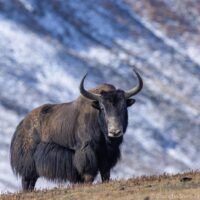
Table of Contents Introduction Wild Yak Overview Scientific Classification Field Identification Physical Characteristics Size and Weight Fur and Appearance Morphological Variations Distribution and Habitat Historic and Current Range Preferred Habitats Behavior and Ecology Social Structures Dietary Preferences Natural Predators Reproduction and Life Cycle Conservation Status Threats to Survival Efforts in Conservation Impact on Humans Human-Wild Yak Conflicts Reservoir for Zoonotic Diseases Testimonials Conclusion FAQs Introduction Nestled in the high-altitude wilderness of the Himalayas, the wild yak (Bos mutus) reigns as a majestic symbol of resilience and adaptation. These massive bovines not only represent the rugged beauty of alpine regions but also hold a critical place in the ecological balance of […]
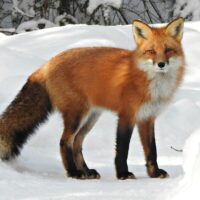
The red fox (Vulpes vulpes) is one of the most captivating members of the animal kingdom. Known for its vibrant fur and remarkable adaptability, this species has thrived across continents, from urban areas to wild landscapes. In this blog post, we will dive deep into the biology, behavior, and human interactions of the red fox, highlighting its unique characteristics and significance in ecosystems worldwide. Table of Contents Introduction to the Red Fox Physical Characteristics and Dimensions Habitat and Distribution Behavioral Patterns Diet and Hunting Techniques Subspecies and Evolutionary History Enemies, Competitors, and Challenges The Red Fox in Human Culture The Urban Red Fox FAQs Conclusion Introduction to the Red Fox […]
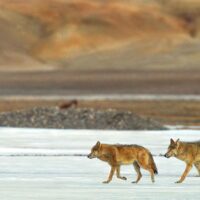
The Tibetan Wolf, also known as the Himalayan Wolf, scientifically classified as Canis lupus chanco, is a captivating apex predator of the trans-Himalayan region. Its unique adaptations, ancient lineage, and role in maintaining the ecological balance make it an indispensable subject of study and conservation. This article dives deep into the biology, distribution, behavior, and conservation efforts surrounding this remarkable wolf. Table of Contents Introduction Classification and Taxonomy Physical Characteristics Distribution and Habitat Unique Behavior and Communication Diet and Prey Phylogeography and Genetic Insights Relationship with Other Wolves Conservation Status and Threats Role in Ecosystem Testimonials Conclusion FAQs Introduction The Tibetan Wolf, often regarded as a subspecies of the gray […]
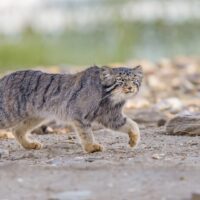
Discover the fascinating world of the Pallas’s cat, a small but fierce wild feline known for its distinct appearance, elusive nature, and resilience in harsh climates. Also called the manul, this remarkable cat has a story that spans centuries, from the desolate mountains of Central Asia to its status as a beloved symbol in zoos and online culture. Table of Contents Introduction to Pallas’s Cat Taxonomy and Classification Physical Characteristics Distribution and Habitat Behavior and Ecology Diet and Hunting Reproduction and Life Cycle Threats and Conservation Status In Captivity Fun Facts and Popular Culture Testimonials Q&A Introduction to Pallas’s Cat The Pallas’s cat (Otocolobus manul), sometimes called the manul, is […]
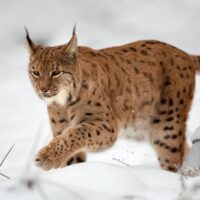
El lince euroasiático (Lynx lynx) es un fascinante felino salvaje de tamaño mediano, conocido por su asombrosa adaptabilidad, sigilo y belleza. Reconocido por sus orejas con mechones, su pelaje llamativo y su excepcional destreza para la caza, este depredador esquivo es esencial para los ecosistemas que habita. Distribuido por Europa y Asia, el lince euroasiático tiene una historia que merece ser explorada. En este blog, profundizaremos en el hábitat, el comportamiento, la taxonomía, el estado de conservación y mucho más sobre el lince euroasiático. Ya sea que seas un entusiasta de la vida silvestre, un conservacionista o simplemente alguien curioso por este extraordinario animal, esta guía será tu mejor recurso. […]

